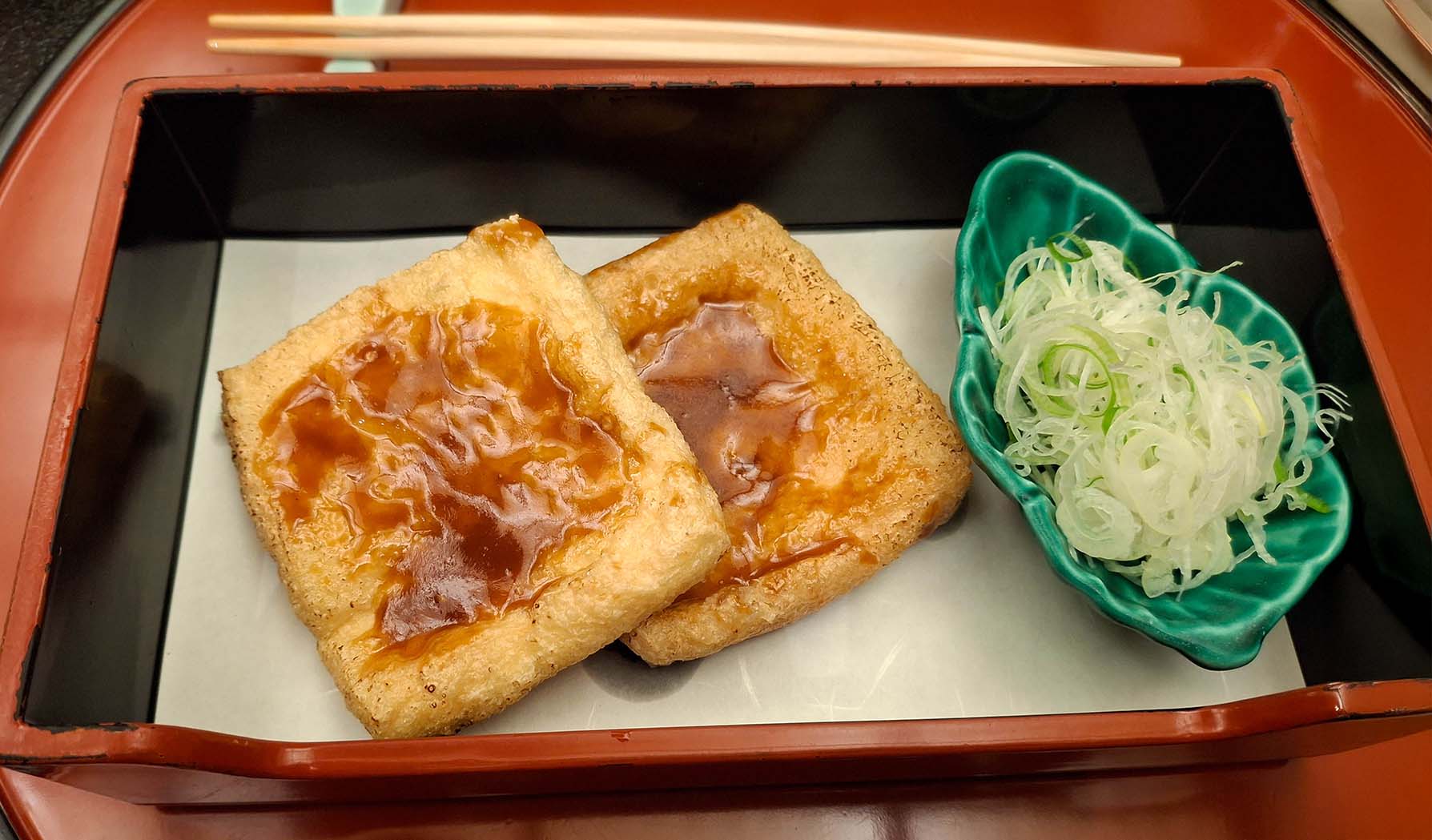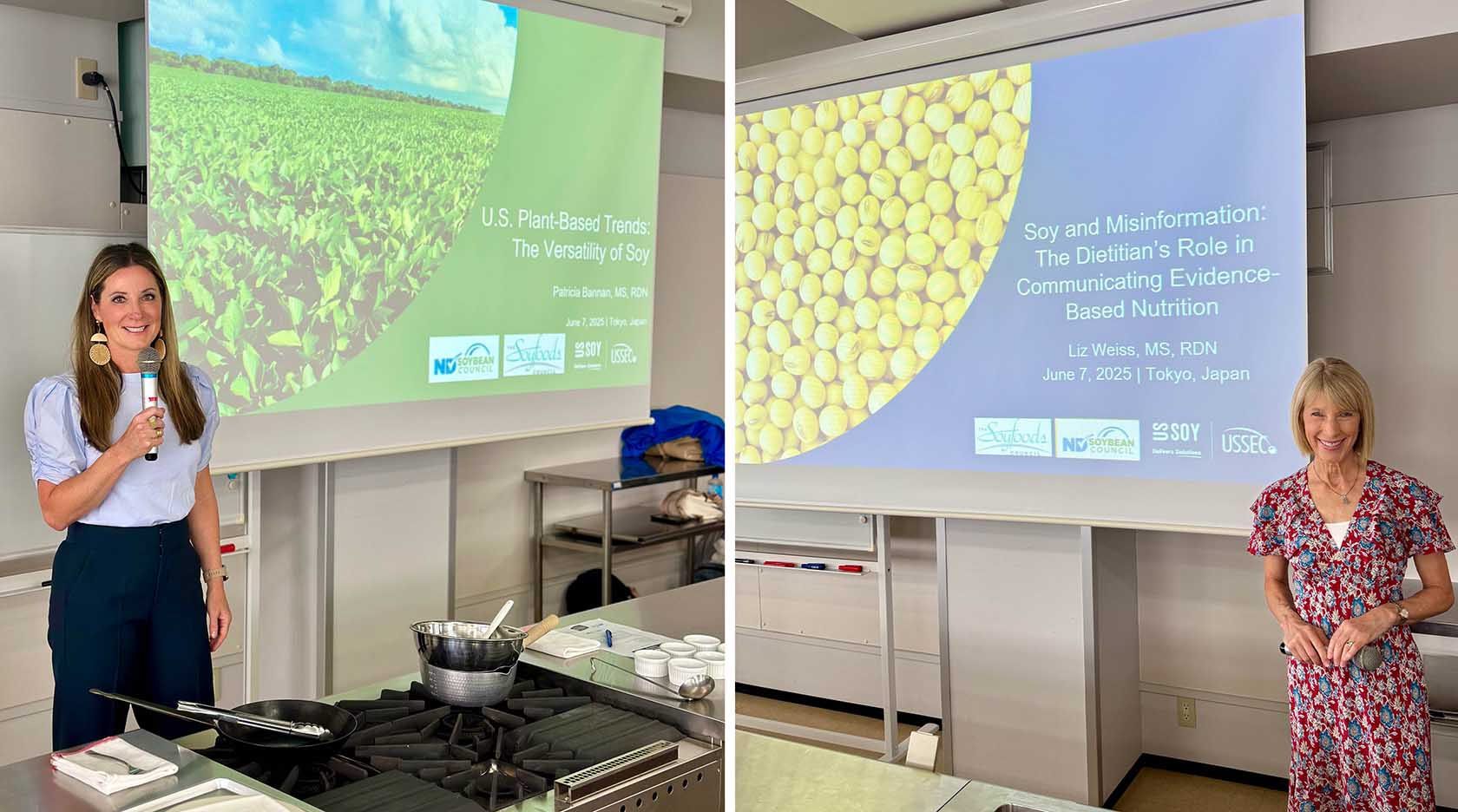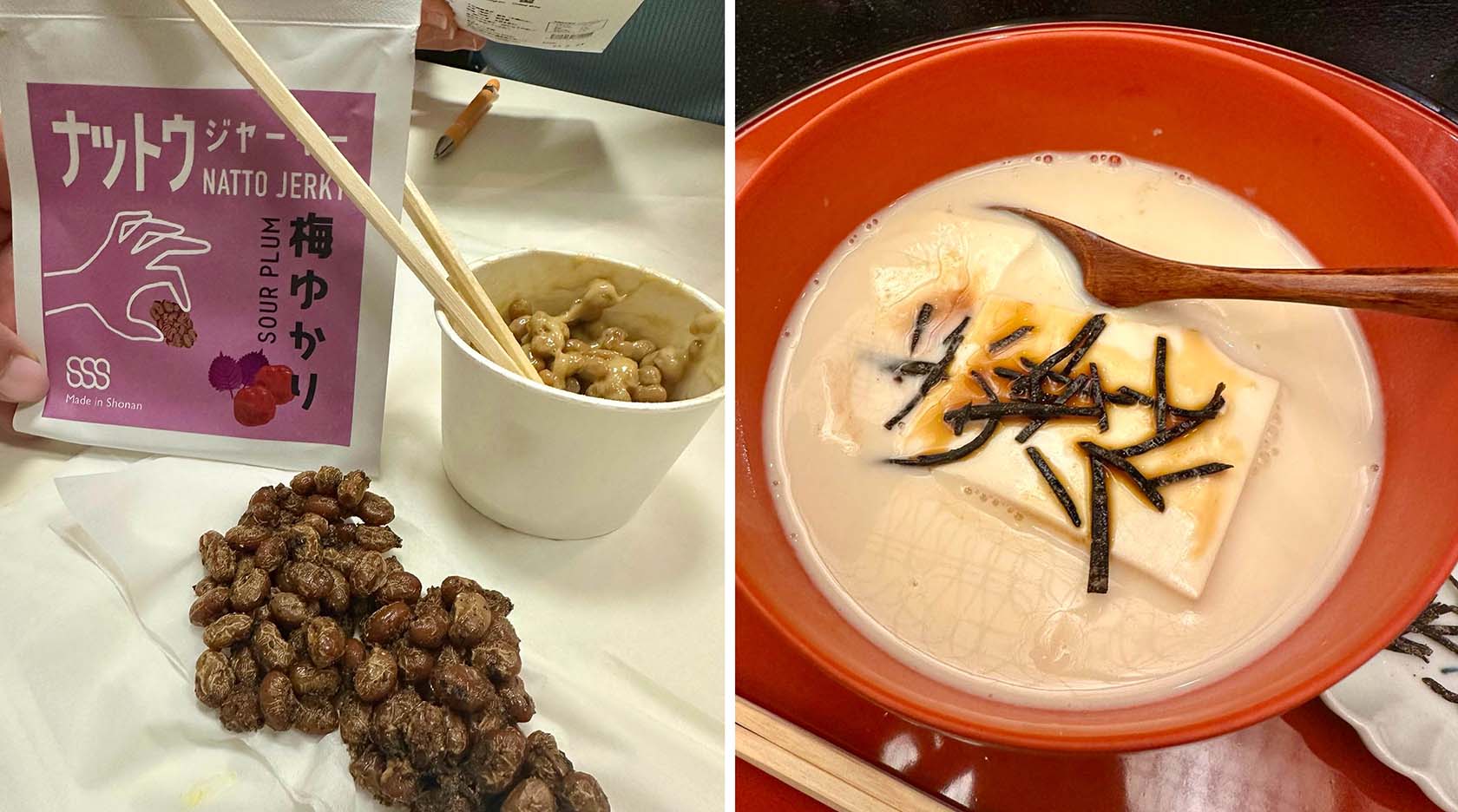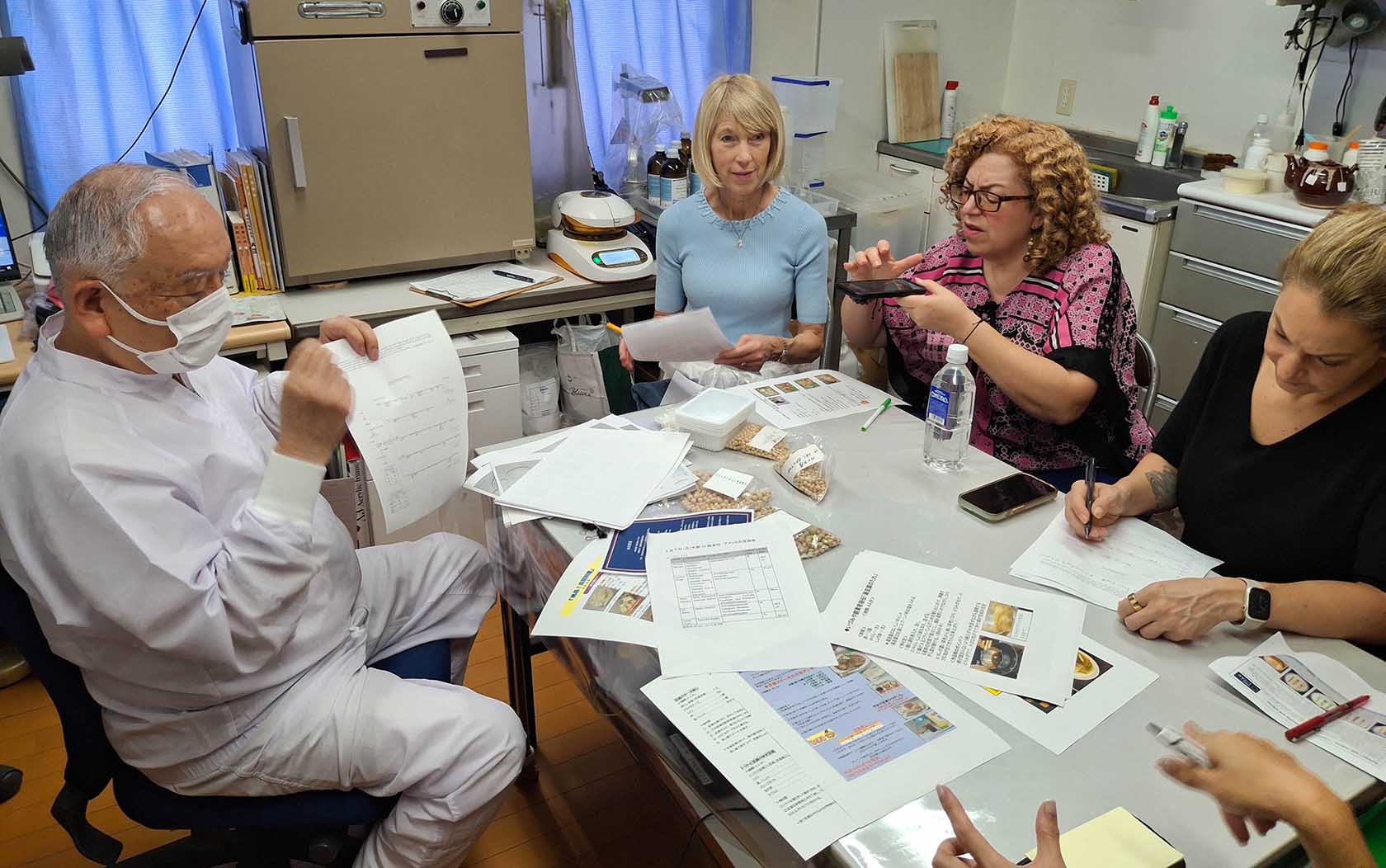
(Photo: Linda Funk)
Exchange program illuminates soy’s role in healthy diets
July 9, 2025 | Kriss Nelson
Soy serves a purpose beyond being a feedstock for biofuels and livestock feed. It’s a versatile, nutrient-rich ingredient finding its way to plates around the world.
To help share soy’s value as a food ingredient, Linda Funk, executive director of The Soyfoods Council, and four U.S. dietitians traveled to Japan in June, where they participated in the Dietitian Soy Exchange program. It aimed to educate Tokyo dietitians on soy-based recipes, U.S. plant-focused diets, soy’s role in managing diabetes and GLP-1-related diets, while also dispelling common myths about soy.

“I think the Japanese dietitians were really excited to hear some new information and see applications they weren’t familiar with,” says Funk. “The Japanese typically eat soy in a very traditional way, so showing them something a little nontraditional was very interesting to them.”
The U.S. Soybean Export Council, the Iowa Soybean Association and the North Dakota Soybean Council funded the program.
“I’m incredibly grateful to the Iowa Soybean Association, North Dakota Soybean Council and USSEC for supporting this experience,” says Patricia Bannan, MS, RDN. “Connecting with Japanese dietitians to share insights on soy’s role in a healthy diet was truly meaningful. As someone passionate about global food culture, experiencing soy’s deep roots in Japan firsthand was unforgettable.”
Bannan is a healthy cooking expert, author of “From Burnout to Balance,” and founder of Wellness Intelligence, a program that combines nutrition expertise with evidence-based wellness strategies to create personalized systems for her clients. She presented to more than 50 Japanese dietitians and media professionals on plant-based eating trends in the U.S., highlighting the rise of flexitarianism, a semi-vegitarian diet which includes plant-based food and meat and other animal products in moderation. She also spoke about evolving consumer motivations and expanding the variety of soy-based products in the American market.

“The Q&A portion reflected genuine curiosity about how soy is positioned in U.S. food and nutrition conversations,” Bannan says. “The feedback was incredibly positive—it was truly an honor to represent U.S. dietitians in such a meaningful cross-cultural exchange.”
Lorena Drago, a registered dietitian, speaker, author, consultant and certified diabetes care and education specialist, presented on diabetes and the role of GLP-1 medications. GLP-1 medications are used to treat diabetes and are increasingly used in weight management. She noted that these drugs are also being used in Japan and sparked interest among attendees.
“There’s great research showing that soy is an excellent dietary partner when using GLP-1 medications,” Funk says.
Abbie Gellman, a chef, registered dietitian and author, led a cooking demonstration, preparing ground pork, tofu meatballs and a chocolate dessert. All dishes were well received by the Japanese dietitians.
“I took a poll after they tasted the dishes and asked how many really enjoyed them — all hands went up,” says Funk. “Then I asked how many would personally make them or recommend them to clients, and again, every hand went up. It was a huge hit and really showed how easy it is to incorporate soy foods into everyday life.”
Liz Weiss, a media dietitian, or registered dietitian nutritionist who specializes in communicating nutritional facts through various media platforms, helped clarify misinformation about soy.
“I think they appreciated learning the key talking points to use when discussing soy at public events, ensuring accurate information is shared,” says Funk.
U.S. dietitians toured processing facilities to gain firsthand experience with soy-based products.
“Touring tofu, miso and natto production facilities gave me a whole new appreciation for the quality and care that go into traditional soy foods,” says Bannan. “I even tried natto for the first time—and had the best tofu of my life, so creamy, delicate and flavorful. Traveling alongside fellow dietitians made the experience even more meaningful. I came home with both professional inspiration and personal gratitude, excited to share the value of soy in a wellness-focused lifestyle.”

Sharing more about soy
As part of the Dietitian Soy Exchange program, U.S. dietitians will share their stories with fellow dietitians and collaborate to develop an e-cookbook.
“I think it was a great experience. They already had a solid understanding of soy foods as dietitians, but the experience enhanced their level of knowledge of how soy foods are made,” says Funk. “Now they can bring that experience back and apply it in creative and meaningful ways.”
Promoting the health benefits of soy, particularly seed oils, starts with providing accurate, science-based information. The trip ensured participants returned with the knowledge needed to confidently discuss soy within the context of a healthy diet.
“Soy is one of my go-to ingredients because of its versatility, nutrition and ease of use.,” says Bannan. “From tofu and tempeh to edamame and miso, it works in a wide variety of dishes. Whether I’m tossing edamame into a grain bowl or blending tofu into a creamy dip, soy helps make meals satisfying, nourishing and simple. Plus, it’s a plant-based protein that supports both heart health and sustainable eating.”
Seeing how soy is seamlessly woven into the Japanese diets struck an impression on Weiss.
“Soy is in everything from grab-and-go soy barns to natto, miso soup with soft, pillowy tofu and fried tofu with miso glaze,” says Weiss. “We ate school lunch as a middle school where cooked soybeans were integrated into a chili con carne dish, and the students seemed to love it, and so did we.”
Written by Kriss Nelson.
Back